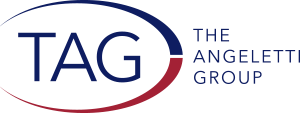If there’s one thing the pandemic taught cultural organizations, it’s that planning ahead means ensuring sustainability.
When COVID-19 shuttered theaters and cultural venues across the country in March 2020, all forms of earned revenue – primarily ticket sales – ceased overnight. In response, organizations scrambled to reduce operating budgets and increase contributed revenue to stay afloat.
According to Americans for the Arts, COVID-19 resulted in an estimated $15.2B financial loss for arts and cultural organizations. As recovery from such significant and abrupt loss continues, these same arts organizations are now strategizing to create a safeguard against future unexpected challenges. One of their best defenses: endowments.
An increasingly essential revenue stream, endowments serve as a safety net in maintaining sustainability for the arts while providing a path toward vibrancy. Contributed or unearned revenue, along with earned revenue gained through ticket sales, rentals, parking and catering, are not sufficient to ensure a fiscally well-managed organization is advancing its mission. For example, the League of Symphony Orchestras cites that on average, symphony orchestras rely on endowment fund distributions and other investment income for roughly 17 percent of their operating budgets.
The massive dislocation caused by COVID-19, and the Great Recession prior to the pandemic, underscored the essential need to grow all forms of endowments for most cultural institutions. So how to begin analyzing how much endowment makes sense for your institution and preparing for a campaign?
- There is no simple formula for calculating the correct size of an endowment. The old thinking was 200 times your operating budget, but this may not be sufficient for organizations with extensive arts education and community engagement programs or those that do not generate 75% of their operating budget through earned revenue.
Instead, we recommend creating a 10-year financial projection based on your current strategic plan or business plan (and if you do not have a plan, developing one is an immediate priority) to help understand long-term endowment requirements. If there’s an ongoing structural deficit growing your endowment, eliminating that is your starting point.
- If you do not have an endowment or it is very small, then consider establishing a Board-designated reserve fund prior to adding to or starting a permanently restricted fund. You can draw down the principle in a Board-designated fund, allowing you to better withstand emergencies. Of course, you must exercise discipline both in using and replenishing such a fund.
- Consider creating special purpose funds like an innovation fund to help address specific requirements, such as investing in new works. This allows you to steward these gifts appropriately and will resonate with donors who have similar interests.
- Once you have determined your approximate endowment fundraising requirement, you should contact us to discuss conducting a campaign readiness assessment and a feasibility study. Unless you have recently conducted multiple successful campaigns, you will want to undertake a study to understand if and how your proposed campaign objectives and goals align with your donor philanthropic interests and priorities. In addition, you will also want to know if you are ready to undertake a campaign and where your development program may require strengthening.
While we hope that cultural organizations will never again undergo severe financial strains like those presented during the pandemic, we’ve certainly learned our lesson. Let’s do all we can to ensure a vibrant and thriving future, no matter what lies ahead.


